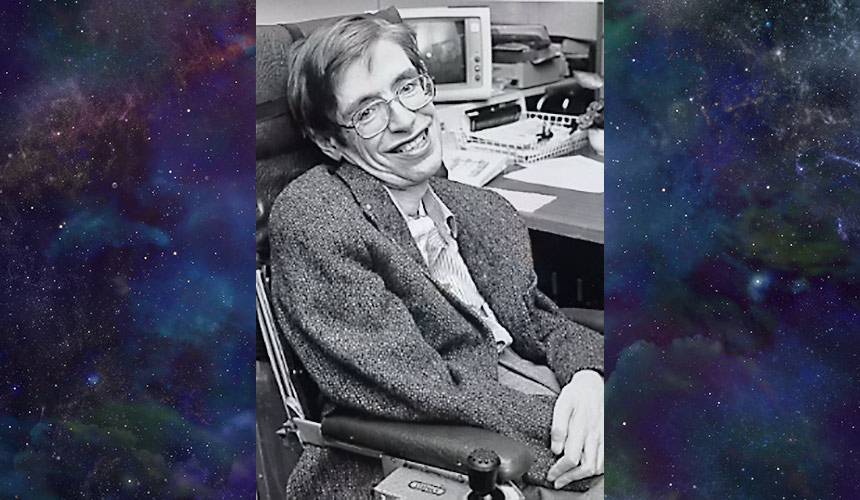Stephen Hawking a stellar source of inspiration
Published at | Updated at
Nothing we own on this Earth is actually ours. The particles in our belongings, our loved ones, ourselves … they once belonged to our celestial predecessors, to stars that died in fiery supernova explosions. All that we are is borrowed. And thankfully, the human race was able to borrow the particles that went together to form Stephen Hawking for a little while.
Hawking, one of the most brilliant and influential physicists of the modern era, died earlier this week. His works in cosmology fundamentally changed our understanding of black holes and the history of the universe. He helped bring light to many a shadowy corner of our knowledge of the cosmos.
But he didn’t stop there. He penned the bestselling book “A Brief History of Time,” which introduced millions of everyday people to complex astrophysical concepts in a way they could understand. He even became a pop culture icon, popping up in everything from “Star Trek: The Next Generation” to “The Simpsons.”
That’s a great list of accomplishments, worthy of celebration. But Hawking’s most important contribution to humanity may be inspiration.
Doubtless many scientists got their start after having their curiosity sparked when coming across Hawking’s work. But it may go further than that. And now I need to get a little personal. Sorry for the blogginess.
I became aware of Stephen Hawking around the time I start writing novels back around 2010. I had heard his name and I knew he was the super smart guy in the chair, but I didn’t really know anything else about him.
As luck would have it, a novel idea I had required me to dig around and do some research into cosmology. As part of my research, I read a “Brief History of Time.” After my brain, ran out my ears and I piped it back into my cranial cavity, I began to see new possibilities for storytelling.
My excitement drove me to delve even deeper into cosmology and quantum mechanics. I discovered theories about parallel universes and entanglement. And I can’t believe I’m the only one. It’s easy to imagine all kinds of other artists, writers, filmmakers and other storytellers getting similarly fired up by the possibilities suggested by Hawking’s work.
Most importantly, Hawking is an amazing example of perseverance and not limiting yourself. Hawking was diagnosed with ALS at the age of 21, at which point doctors gave him two years to live. Not only did he live long past those projections, but he made his greatest contributions long after doctors thought he would die. Though confined to a wheelchair and deteriorating in body, Hawking let his mind fly wherever he wanted it to. He authored multiple books, expanded the boundaries of cosmology, and he did it all while suffering through a disease that would completely sap the wills of less determined souls.

Whenever I’m having a bad day, I think about Hawking. I have health problems. I struggle with depression and anxiety. But I’m still able to get up and move around. If I get really ambitious, I can even shake my booty. When I feel like I don’t have anything left in the tank, I think about Hawking and how he was able to achieve so much even though he couldn’t walk or talk. And my goals are far less ambitious than Hawking’s were.
If he can fight through it and still contribute to the world, maybe I can too.



